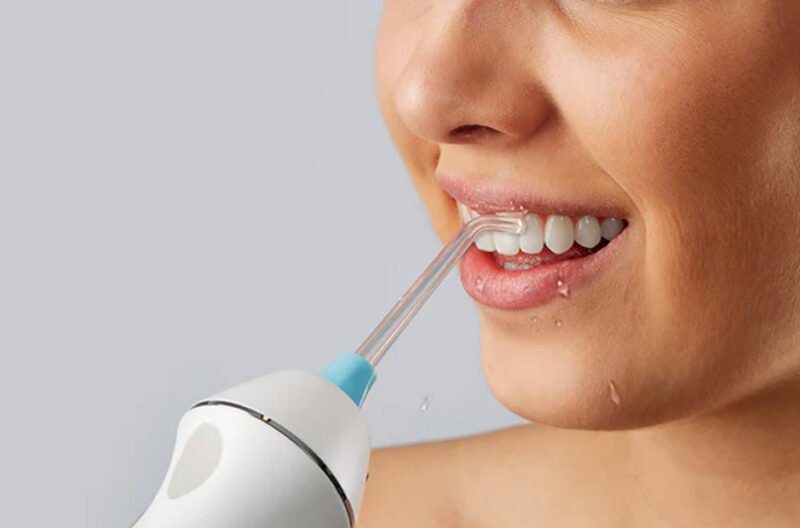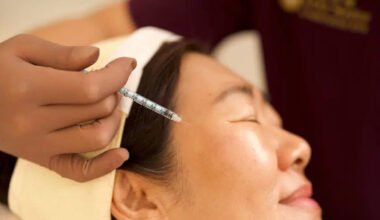Oral health is a critical part of overall wellness, and maintaining it requires more than just brushing your teeth. Traditional dental care routines have long emphasised the importance of flossing to remove debris and plaque from between teeth where a toothbrush may not reach. However, advancements in dental technology have introduced an innovative solution that is rapidly changing the way people perform their oral hygiene routines at home – water flossers.
The Advent of Water Flossers in Oral Hygiene
Dental care experts continually seek out better methods for maintaining oral health, leading to the development of water flossers as an effective alternative to traditional string floss. These devices utilise a stream of pulsating water to clean between teeth and below the gumline – places that can be difficult to reach with conventional floss.
This approach to flossing is not only effective but also gentle, making it an excellent option for those with sensitive gums or dental appliances like braces. Water flossers can help reduce inflammation and bleeding, which are often side effects of traditional flossing, especially in individuals with gum disease or gingivitis.
The Importance of Complementing Brushing with Flossing
Brushing your teeth twice a day is foundational to dental hygiene, but it’s only part of the picture. Flossing is an equally essential habit, as it removes food particles and plaque that brushing cannot reach. Unfortunately, many individuals find flossing with string to be tedious, uncomfortable, or difficult – leading to a neglect of this crucial step.
With water flossers, users can experience a more manageable and – for some – a more enjoyable form of flossing. The ease of holding a handle and manipulating a stream of water can increase the likelihood of regular flossing, thereby improving overall dental health.
Features and Benefits of Water Flossers
Water flossers typically come with a range of features designed to cater to individual needs. Adjustable pressure settings allow users to find the most comfortable and effective strength for their gums. Various tips are also available to target specific needs, whether for general cleaning, for periodontal pockets, or for use with braces and other dental work.
The benefits of using a water flosser extend beyond ease and comfort. They are clinically proven to be more effective in removing plaque than traditional floss, which ultimately leads to healthier gums and teeth. For those with dexterity issues or arthritis, a water flosser can offer a level of independence in oral care that might be difficult to achieve with string floss.
Adoption of Water Flossers by Dental Professionals
Dental professionals are increasingly recommending water flossers to their patients, particularly those with specific dental care needs. Hygienists and dentists recognise the role that these devices can play in improving patient compliance with daily flossing, which in turn can dramatically improve the effectiveness of their professional treatments and the general dental health of their patients.
Moreover, studies have shown that water flossers can be beneficial in reducing the risk of gum disease, a common condition with potentially serious consequences if left untreated. The ability to reach deep between teeth and below the gumline makes water flossers an indispensable tool in combating this issue.
How to Integrate Water Flossers into Your Oral Care Routine
Integrating a water flosser into your daily dental care routine can be a straightforward process. It’s generally recommended to use the device after brushing, to clear out any loosened plaque and food particles. Starting at the lowest pressure setting and gradually increasing it helps users get acclimated to the sensation and discover the most comfortable and effective setting for their gums.
One of the beauties of water flossers is their convenience. Most models are designed with simplicity in mind, featuring easy-to-fill reservoirs and straightforward controls. Portability is another perk, with some water flossers coming in cordless designs, making them perfect for use while travelling.
Making the Switch from Traditional Floss to Water Flossers
Transitioning from traditional string floss to a water flosser can take some getting used to; however, the learning curve is generally mild. Users may need to adjust their technique initially to prevent splashing and to ensure they’re thoroughly cleaning each tooth. But the investment in time and adaptation is minor compared to the long-term oral health benefits.
Those considering making the switch should research different models and brands to find a water flosser that fits their specific needs and preferences. There are options at various price points, with different features and functionalities to match individual requirements and budgets.
Challenges and Considerations
While water flossers are an effective tool, they are not a cure-all. Some individuals may find them messy at first, or they might not be compatible with the user’s existing bathroom setup due to space or outlet availability. Additionally, cost can be a consideration, as water flossers are typically more expensive upfront than traditional floss.
However, many users find that the benefits far outweigh these initial challenges. With regular use and correct technique, a water flosser can be an extremely valuable addition to one’s dental hygiene arsenal.
Conclusion
Water flossers represent a significant advancement in at-home dental care, merging effectiveness with ease of use. They cater to a range of oral hygiene needs and have been embraced by both professionals and consumers. As awareness grows about their benefits and capabilities, water flossers are set to become a staple in the routines of individuals looking to enhance their oral health.
By investing in tools like water flossers, individuals can take proactive steps towards maintaining a healthy smile and preventing dental issues. Thus, water flossers aren’t just revolutionising dental care at home; they’re playing a crucial role in promoting better oral health outcomes worldwide.






